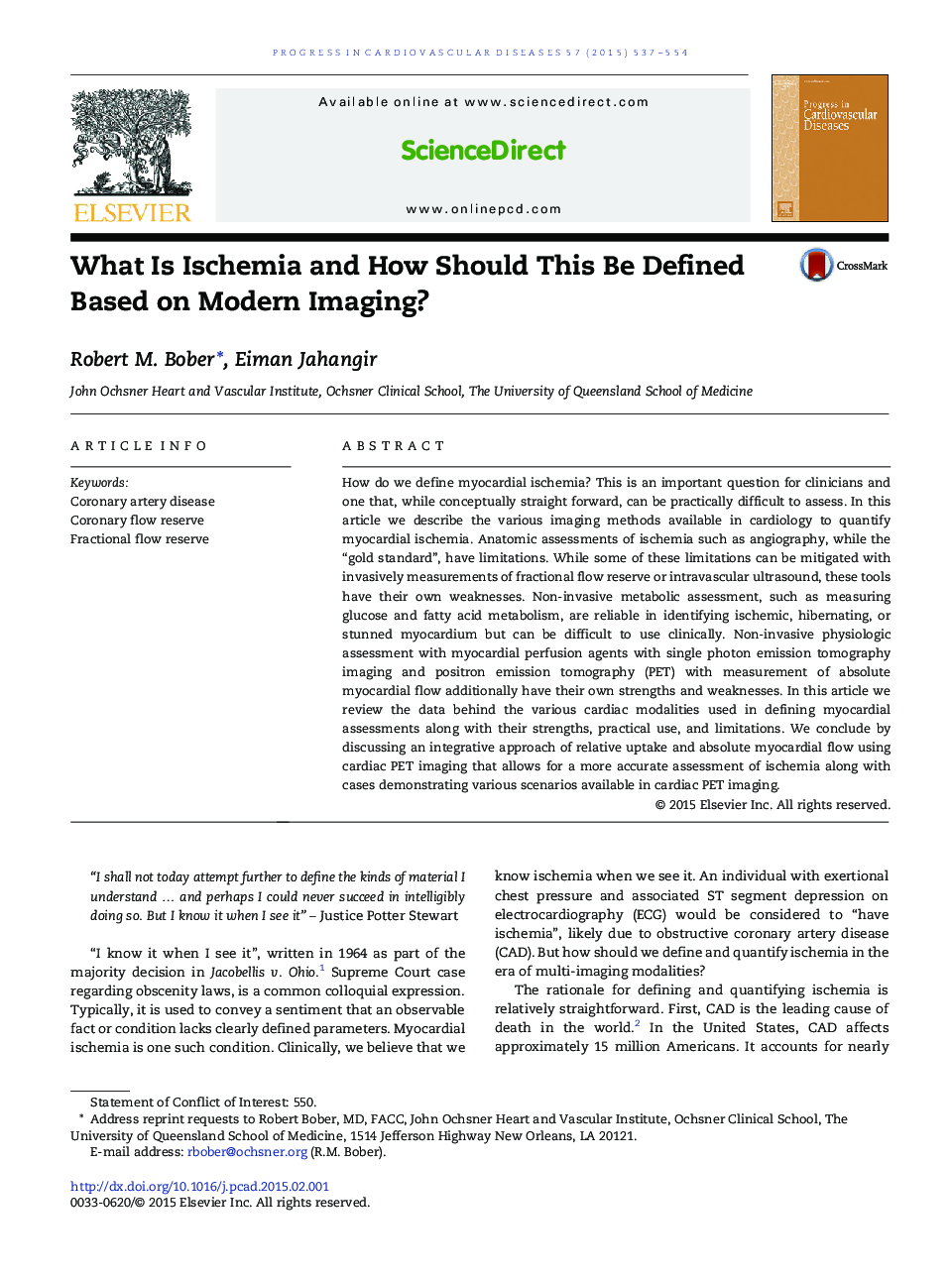| Article ID | Journal | Published Year | Pages | File Type |
|---|---|---|---|---|
| 3006452 | Progress in Cardiovascular Diseases | 2015 | 18 Pages |
How do we define myocardial ischemia? This is an important question for clinicians and one that, while conceptually straight forward, can be practically difficult to assess. In this article we describe the various imaging methods available in cardiology to quantify myocardial ischemia. Anatomic assessments of ischemia such as angiography, while the “gold standard”, have limitations. While some of these limitations can be mitigated with invasively measurements of fractional flow reserve or intravascular ultrasound, these tools have their own weaknesses. Non-invasive metabolic assessment, such as measuring glucose and fatty acid metabolism, are reliable in identifying ischemic, hibernating, or stunned myocardium but can be difficult to use clinically. Non-invasive physiologic assessment with myocardial perfusion agents with single photon emission tomography imaging and positron emission tomography (PET) with measurement of absolute myocardial flow additionally have their own strengths and weaknesses. In this article we review the data behind the various cardiac modalities used in defining myocardial assessments along with their strengths, practical use, and limitations. We conclude by discussing an integrative approach of relative uptake and absolute myocardial flow using cardiac PET imaging that allows for a more accurate assessment of ischemia along with cases demonstrating various scenarios available in cardiac PET imaging.
